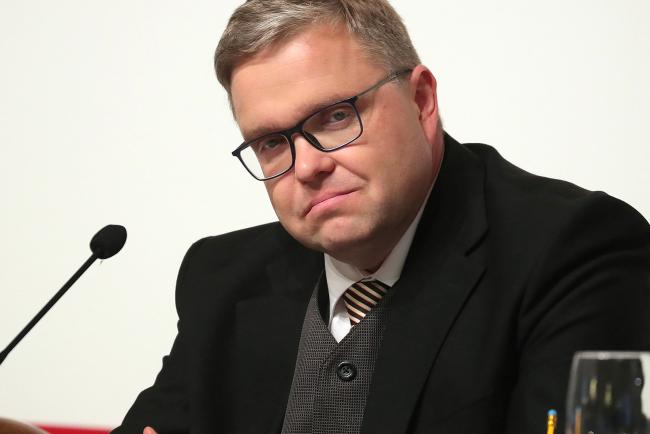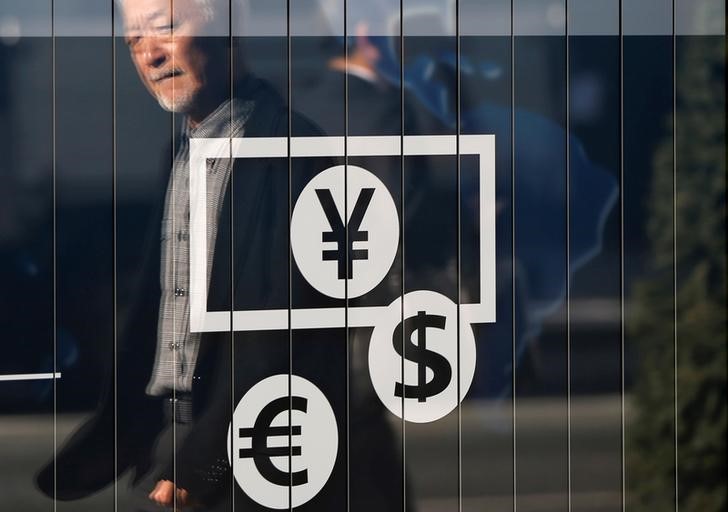(Bloomberg) -- The European Central Bank must be cautious when it shifts away from its emergency stimulus even if the economy rebounds from the pandemic as predicted, according to outgoing policy maker Vitas Vasiliauskas.
The Governing Council member and head of Lithuania’s central bank, who steps down from those roles next month, said in an interview that the ECB should draw on its earlier experiences of tightening too soon. That means switching back to more-standard monetary tools only gradually.
Even after inflation is back to its pre-pandemic trajectory, policy makers will need to keep quantitative easing in place for “quite a while,” he predicted.
“I don’t think we can allow ourselves to make very sharp changes to our monetary policy, especially having in mind our historic experience,” Vasiliauskas said on Monday. “It would be better to live a little bit longer in the transitional situation.”
ECB officials have been forced to backtrack in the past decade after capping or withdrawing monetary support too soon. They halted bond purchases at the end of 2018 -- only to restart buying within a year as the economy deteriorated -- and were forced to reverse two interest-rate increases in 2011.
Their 1.85 trillion-euro ($2.2 trillion) pandemic emergency purchase program is set to run for at least another year, while an older QE plan set up in 2015 is open-ended -- tied only to progress in returning euro-area inflation sustainably toward 2%.
“I don’t think that keeping stimulus too long is a big risk in comparison to overreacting by abolishing stimulus,” said Vasiliauskas, adding that he wouldn’t expect any decision on how to unwind the crisis program before the fall.
The 47-year-old has headed the Lithuanian central bank for a decade and became an ECB policy maker in 2015 when his nation joined the euro. He’s moving to the International Monetary Fund’s executive board as its representative for the Baltic and Nordic regions.
The ECB is currently accelerating its bond purchases to push back against higher borrowing costs, reflecting a widening divergence between the euro-area and U.S. economies. The American recovery is powered by a rapid pace of inoculations and massive fiscal support, while the euro zone is bogged down in extended restrictions because of a botched vaccine rollout.
Central banks across the region bought an average of 20 billion euros worth of debt a week over the past two weeks to keep financing conditions for governments, companies and households favorable, and Vasiliauskas signaled that investors should expect such a pace to continue.
“For the moment, I don’t see any need to change our path,” he said.
While acknowledging that the bloc is struggling to overcome the crisis, Vasiliauskas said the ECB’s latest projections for an economic bounceback starting next quarter are still valid.
The institution’s staff predicted this month that the 19-nation economy would shrink in the first quarter before growing at least 1.3% in the subsequent three periods. They see a full-year of expansion of 4% -- though that’s not enough to recoup last year’s contraction of 6.6%.
“I’m optimistic regarding the balance of risks and what we can see, what we can expect in the second part of this year,” the governor said. “The forecasts reflect reality -- I wouldn’t say they’re too pessimistic or optimistic.”
He also said, echoing recent interviews by Governing Council colleagues Martins Kazaks of Latvia and Slovakia’s Peter Kazimir, that the looming upturn means the ECB won’t keep borrowing costs at current levels forever.
“Some changes in financial conditions are very natural if you’re faced with some positive changes in the economic outlook,” he said. “You can’t avoid an increase in yields and other rates. The essence is to understand whether it is a natural outcome of the development of the economy or whether there’s something wrong.”
©2021 Bloomberg L.P.

